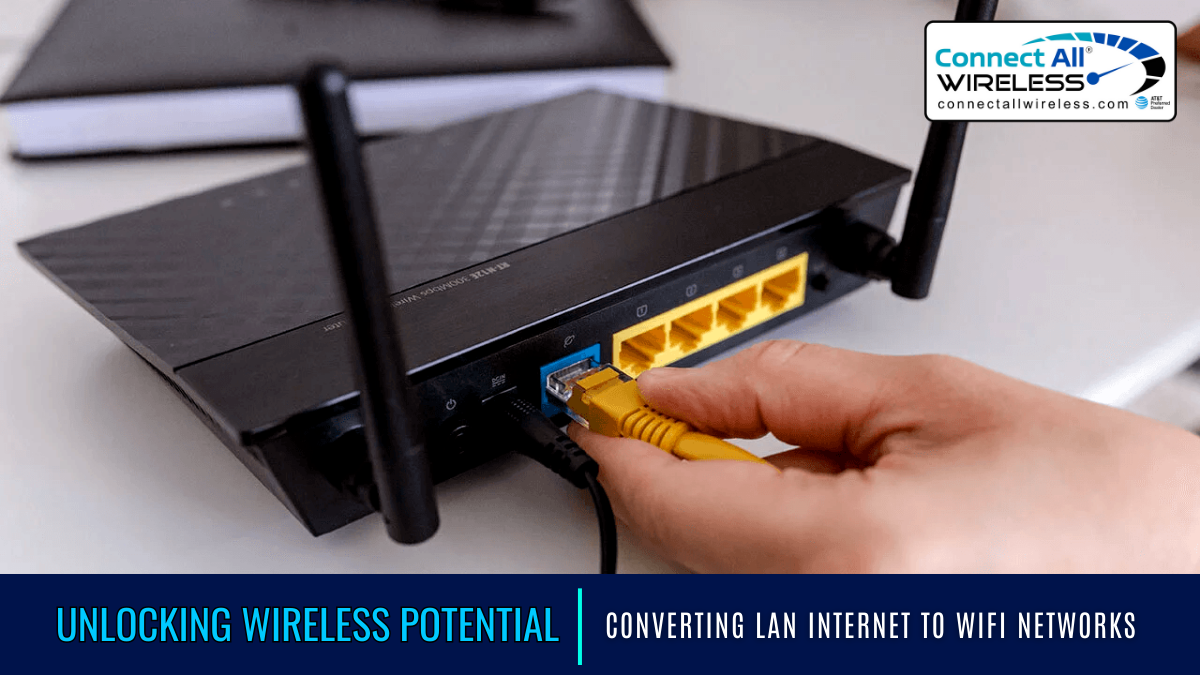Unlocking Wireless Potential: Converting LAN Internet to WiFi Networks
December 25, 2023The landscape of connectivity has undergone a remarkable transformation in recent years. From wired connections dominating households and workplaces to the wireless revolution that has unleashed a new era of accessibility and convenience, the shift from Local Area Network (LAN) to Wireless Fidelity (WiFi) networks has been profound.
The Evolution of Connectivity
The concept of LAN involves connecting devices within a limited area, typically through Ethernet cables. It has long served as the foundation for reliable, high-speed connections. However, the demand for mobility and flexibility prompted the development of wireless networks.
WiFi, a technology based on the IEEE 802.11 standards, has revolutionized how we access the internet. Its convenience and versatility have made it the preferred choice for homes, businesses, and public spaces worldwide. The transition from LAN to WiFi has not only untethered devices but has also unlocked new levels of connectivity.
Understanding LAN and WiFi Networks
LAN functions by physically connecting devices via cables to a central router or switch. This setup ensures stable and high-speed connections but limits mobility. WiFi, on the other hand, operates wirelessly, using radio waves to transmit data between devices and routers. This wireless configuration allows users to access the internet from anywhere within the network’s range.
Benefits of WiFi over LAN
- Mobility: WiFi networks provide freedom of movement, enabling users to connect devices without being bound by physical cables.
- Accessibility: WiFi networks allow multiple devices to connect simultaneously, promoting seamless access for numerous users.
- Convenience: The ease of setup and the absence of cables simplify network management and reduce clutter.
Converting LAN to WiFi
The process of transitioning from LAN to WiFi involves several key steps to ensure a smooth and efficient conversion.
- Assessing Infrastructure: Evaluate the existing LAN setup, including the router, cables, and connected devices. Determine the coverage area required for the WiFi network to ensure comprehensive connectivity.
- Upgrading Hardware: Invest in a reliable WiFi router that aligns with the network’s requirements. Ensure compatibility with the existing internet service and prioritize features such as range, speed, and security.
- Configuration and Setup: Configure the WiFi router by accessing its settings through a web browser. Create a secure network SSID (Service Set Identifier) and implement robust encryption protocols (such as WPA2 or WPA3) to safeguard against unauthorized access.
- Testing and Optimization: After setting up the WiFi network, conduct thorough testing to ensure seamless connectivity across all areas. Fine-tune settings and adjust router placement, if needed, to optimize coverage and signal strength.
Ensuring Security in WiFi Networks
While WiFi offers unparalleled convenience, it also introduces security concerns, making it imperative to implement robust security measures:
Encryption: Enable strong encryption protocols to protect data from potential threats or unauthorized access.
Strong Passwords: Create unique and complex passwords for the WiFi network to prevent unauthorized entry.
Firmware Updates: Regularly update router firmware to patch vulnerabilities and enhance security features.
Embracing the Future of Wireless Connectivity
The conversion from LAN to WiFi represents a pivotal shift in how we access and utilize the internet. As technology continues to evolve, advancements such as WiFi 6 and beyond promise even faster speeds, lower latency, and increased capacity, further revolutionizing wireless connectivity.
The Future of WiFi
WiFi 6: Offering improved speed and efficiency, WiFi 6 delivers enhanced performance in congested environments, catering to the increasing demands of modern connectivity.
IoT Integration: WiFi networks will play a vital role in accommodating the exponential growth of Internet of Things (IoT) devices, enabling seamless integration and communication between smart devices.
Conclusion
The evolution from LAN to WiFi networks represents a pivotal shift, especially in locales like Michigan, where the demand for seamless connectivity is ever-growing. Embracing wireless internet in Michigan means transcending physical constraints, offering mobility and accessibility to users across homes, businesses, and public spaces. As technology advances, the future promises even greater feats, with WiFi 6 and IoT integration set to redefine connectivity.
However, this evolution necessitates stringent security measures to safeguard against potential threats. Transitioning to WiFi networks not only untethers devices but also unlocks a world of possibilities, shaping a future where wireless connectivity is the cornerstone of a fully connected Michigan and beyond.


